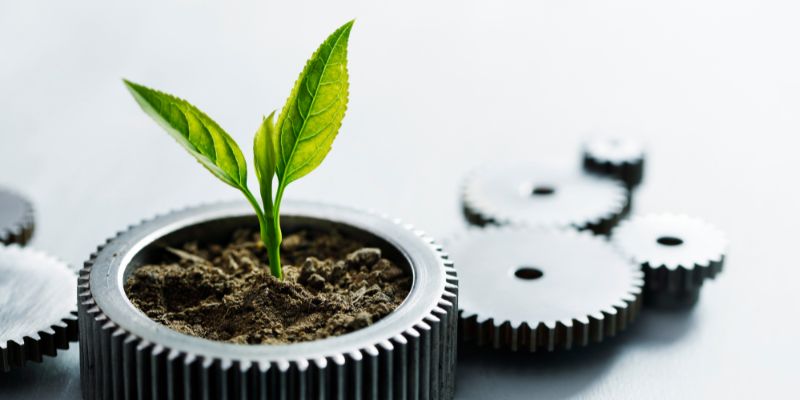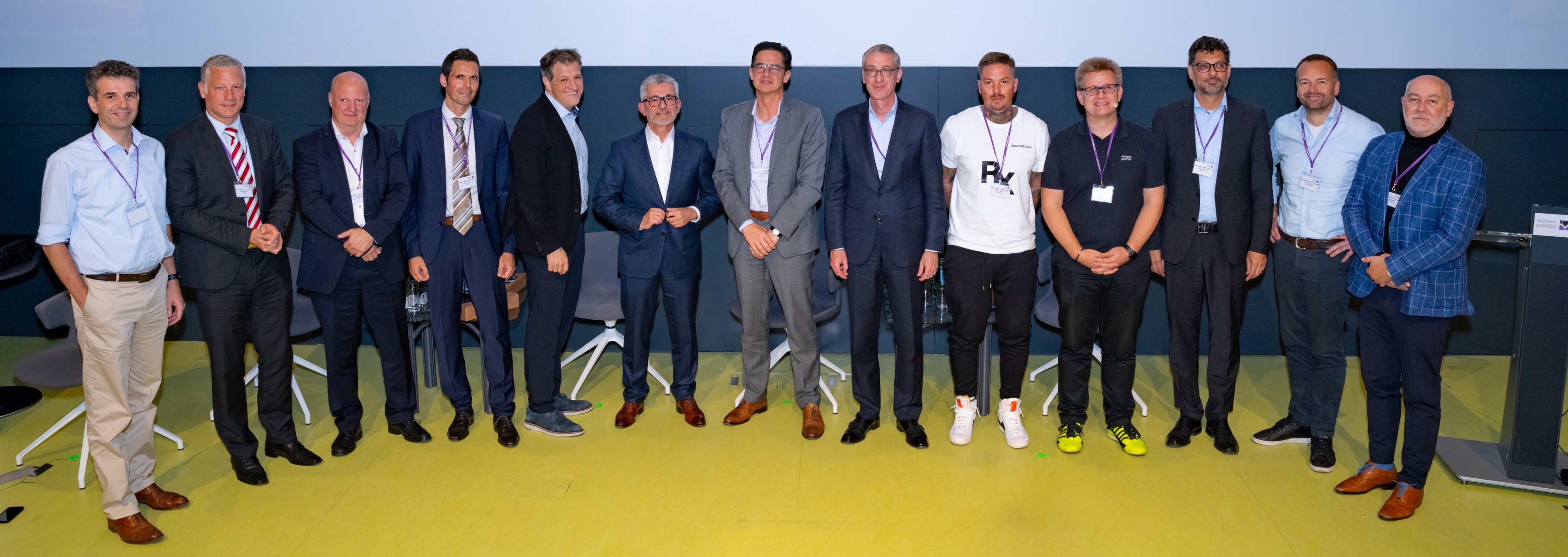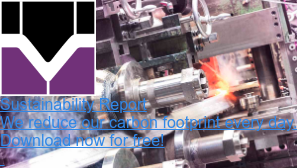Green Steel in Roll Forming – The same thing, only greener?
You could say Green Steel is still “green behind the ears”, but that’s changing as the latest developments in the steel industry are getting into full swing. Local sourcing and modern processes such as roll forming are also moving sustainability more and more into the spotlight in a wide variety of industries. The driving force in national and international organizations is likely to be the goal of climate neutrality set by individual countries – something that will affect all businesses. The aim of the European Green Deal, for example, is for all 27 EU member states to be climate-neutral by 2050.
Green Steel might be relatively new on many people’s radar, but don’t think that established players in the steel industry are all greenhorns when it comes to the development and application of green steel. There are 10 established European partners of Green Steel for Europe who are constantly driving the ambitious project forward. That doesn’t mean we can all rest on the laurels of others' pioneering work: sustainability is always the result of joint action. Together with you, we want to imagine what the green future of roll forming might look like. But first, let's clarify the terminology:
What is Green Steel?
When people talk about Green Steel, they aren’t always talking about the exact same concept. For some, it’s taking a small step towards CO₂ balance, for others it’s making a larger leap towards full climate neutrality. The European steel giant Thyssen Krupp, for example, makes it very clear in its climate strategy that their steel production should be climate-neutral by 2050. However, today's green-manufactured steel is still a ways off from being totally climate neutral. So when we talk about Green Steel now, we refer both to contemporary methods that are reducing the CO₂ output of steel production, as well as the promise of future methods currently being innovated that will lead to truly Green Steel produced with completely CO₂-free production.
Green Steel is therefore the same steel as today's "grey" steel, only it has a different CO₂ balance. The term applies to both:
-
CO₂ reduced steel
-
CO₂ neutral steel
The portfolio of around 2,500 material grades and grades remains the same, in addition to possible new steel developments that will arrive on the market in the coming years.
3 Technologies for a Climate-Neutral Steel Industry
The blast furnace route is the most common method of producing crude steel, but it causes high CO₂ emissions. There are already possibilities, here, that will reduce emissions in the near future. These 3 technologies pave the way to a climate-neutral steel industry:
- Electric steel route
The electric steel route or secondary steel route uses recycled steel scrap and compressed briquettes of sponge iron and is more environmentally friendly than the blast furnace route when using renewable energy sources. That said, there is not enough scrap steel to meet the growing global demand. As a result, only part of the demand for steel will be met by secondary steel production in the future. - Direct hydrogen reduction (H-DRI)
This climate-friendly method of steel production uses hydrogen to convert iron ore into pig iron, which can reduce CO₂ emissions to 0.01 tons per ton of steel. However, this requires the construction of new plants and the use of a large amount of renewable energy. For the year 2050, specific additional costs of around 40 to 60 percent are expected on the H-DRI route compared to the blast furnace route. - CCU/S route
With "Carbon Capture and Use or Storage" (CCU/S) technologies, CO₂ is not avoided but captured and either reused or stored. This technology also generates additional costs of 20 to 40 percent compared to the blast furnace route. Complete decarbonization is not possible via the CCU/S route, as not all greenhouse gas emissions can be filtered out. In addition, CO₂ separation with this method requires a high energy input.
How far are we in the Development of Green Steel?
The goals are clearly laid out, but implementation will probably take a few more years. Voestalpine predicts a feasible reduction in CO₂ emissions by 2027 as part of its hybrid technology with greentec steel. The existing blast furnace routes are to be replaced by a more sustainable hybrid electric steel route. Finally, the focus on green hydrogen should enable CO₂-neutral steel production by 2050.
Two green steel products that are already on the market come from Thyssen Krupp: bluemint ® steel (bluemint® pure and bluemint® recycled). However, since Green Steel is still in its early experimental stages, this “green gold” comes with a price tag high enough to be prohibitive to widespread usage – though that will likely be changing.
Salzgitter has also already planned and communicated its climate-neutral efforts and is pursuing the so-called Carbon Direct Avoidance Strategy with its SALCOS program to reduce greenhouse gas emissions by up to 95 %.
Why is Green Steel still a ways off?
CO₂ emissions in the European Union have already been significantly reduced since the 1990s. According to the European Environment Agency, greenhouse gas emissions in 2020 were around 31% lower than in 1990. Nevertheless, the steel industry will face major challenges in the coming years, as around 20% of greenhouse gas emissions are still attributed to industry, with the steel and iron sector being one of the biggest contributors with around 32.4 tons of CO₂ equivalent.
Climate-neutral steel production requires the complete conversion of classic manufacturing processes, which to date have relied on coal blast furnaces. The large steel companies are already saying that they’ll need to rely on hydrogen in the future in order to be able to produce Green Steel. According to current research results, like the Agora study "No-regret hydrogen: Charting early steps for H₂ infrastructure in Europe", the steel industry is one of the so-called “no-regret sectors”, i.e., industries where there is no real alternative to hydrogen – this will likely be the case in the production of the popular metal.
Over the next few years, however, the conversion from a high-emission blast furnace to climate-neutral direct reduction with hydrogen will be less of a sprint and more of a long-distance relay race to be completed step by step. Steel producers will have to renew their entire plants and processes, as well as find solutions for the relatively high energy costs of using hydrogen.
Green Steel in Roll Forming
Green Steel is produced with a much more sustainable manufacturing process, but it doesn’t lose any of its material properties. Accordingly, it can still be used in the normal way for roll forming (also known as roll profiling).
The steel stays the same, and the rolls of our profiling lines will continue to run uninterrupted even as we move into the age of green steel. But what, if anything, changes?
We, the people, change. Young generations are stepping up and calling for change, wanting to leave a better world for future generations. Steel construction, including steel profiles, will also exist in the future - but if we continue without green innovation, the world as we know it will not. Transforming the industry into a more sustainable one takes development, effort and a pioneering spirit looking to create something better through collaborative work.
At Welser Profile, we don't just think inside the box of our industry, but far beyond. Strictly speaking, we see our activity as part of a larger picture, a future circular economy, where green steel is processed with sustainable technological processes such as roll forming and made usable and available for a wide variety of industries.
Green steel will stay green:
- when our machines process it and shape it into individual custom profiles
- when short distances to delivery partners are sought
- when scrap disposal focuses on reuse in steelworks
- when our Gresten site becomes CO₂-neutral in 2024 thanks to solar panels and hydroelectric power
- when we are expected to become CO₂-neutral in Germany in 2026
- when our experts develop ideas and concepts that meet emerging market needs
Apart from the fact that roll forming is a low-CO₂ process, it also inherently has advantages for process integration in the manufacture of profiles and custom profiles, since several manufacturing and finishing steps, as well as multiple functions, can be combined in one product. In combination with our own pursuit of a green future - such as asking our customers about CO₂ consumption before we look at the costs - we are bringing roll forming into a pioneering circular economy with green steel, local sourcing, sustainable business models and much more.
Conclusion: The Future is looking brighter... and greener
Welser Profile is proud to be part of the movement for a greener future. As a company, we buy steel directly, seek to constantly improve our technology for even more solution integration, and create smart profile solutions from a variety of parts.
Our systems can process steel with a strength of up to 1,000 MPa. This opens up possibilities for the production of weight-optimized components in all areas of daily life. By focusing on lightweight products and applications, we work with our customers to help prevent large quantities of CO₂ from being produced in the first place.
At Welser Profile we consider ourselves pioneers, looking for pioneers to partner and work with. We’re ready for the green steel era and look forward to a carbon-free circular economy in the steel industry.
Read more
Similar articles

How sustainable is Steel today and in the Future?

Photovoltaics: Green Steel for Green Energy


